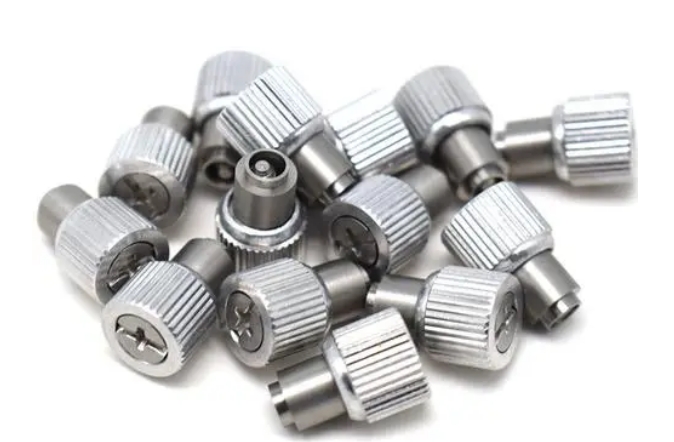
A self-locking screw, as the name implies, is a screw that is loose but does not fall off, also known as a spring screw. The self-locking screw is fixed to the mounting plate by means of pressing or expanding riveting, and is used to fasten the position between plates, also known as a panel screw. After the self-locking screw is riveted and installed, it can be arbitrarily screwed in and out and is firmly secured without easily falling off. Its hand-tightening cap usually has a straight-line knurling design for easy manual tightening, so it is also vividly referred to as a non-detachable screw or hand screw.
The self-locking screw consists of four main parts: the hand-tightening sleeve, the screw, the spring, and the pressing rivet sleeve. The hand-tightening sleeve is often straight-line knurled, and the material is usually aluminum, but it can also be aluminum anodized blackening oxidation based on needs.
The screw is used to fasten the other end of the panel, and the material is mostly carbon steel or stainless steel, with head types of cross-slot and slotted, convenient for tool tightening.
The function of the spring is to keep the entire component from detaching and to allow for free expansion and contraction. The pressing rivet sleeve is what is relied upon for riveting to the panel.
By assembling these four parts into one, the hand-tightening part is extruded and fitted together with the pressing rivet piece through the spring, forming a complete self-locking screw.





 Customer service 1
Customer service 1  Customer service 2
Customer service 2